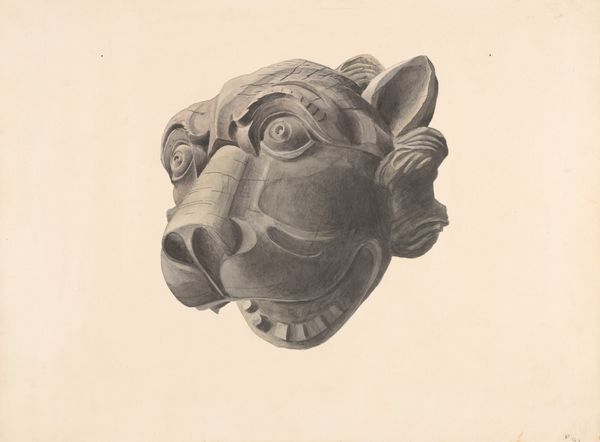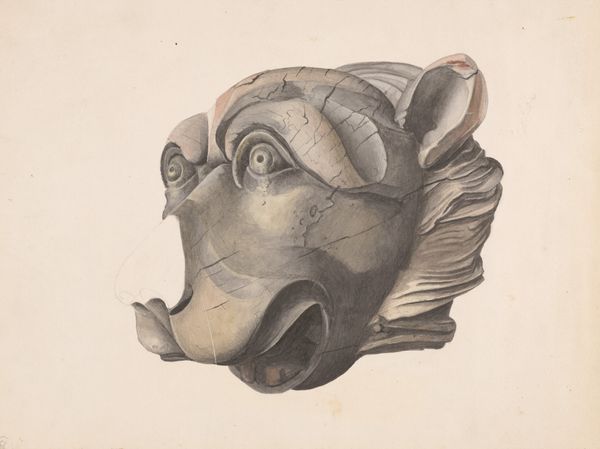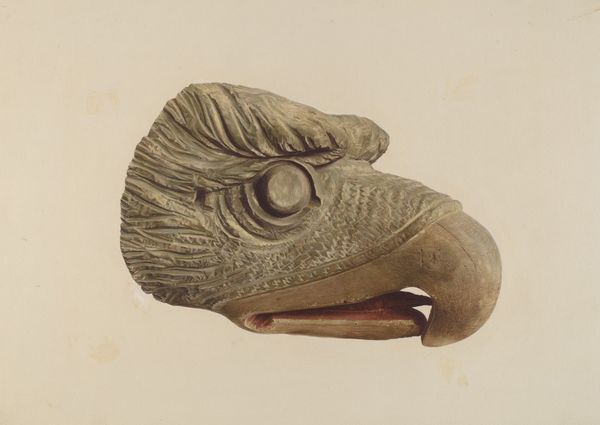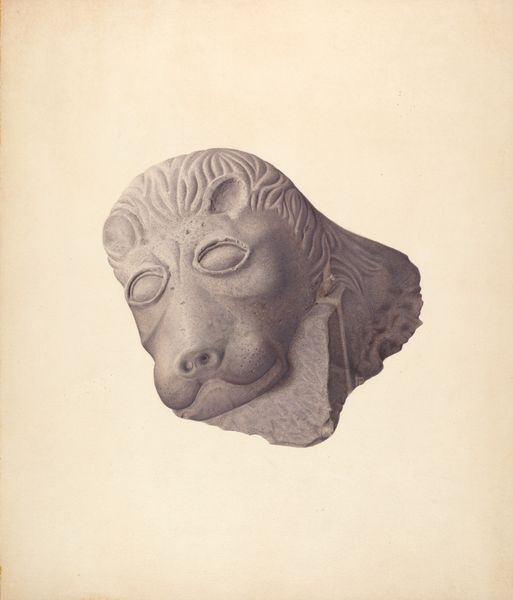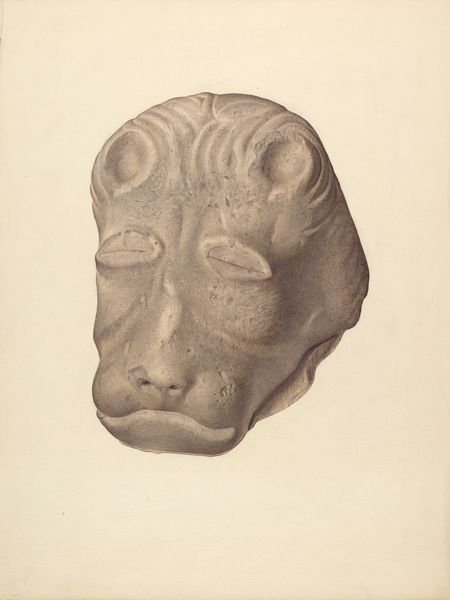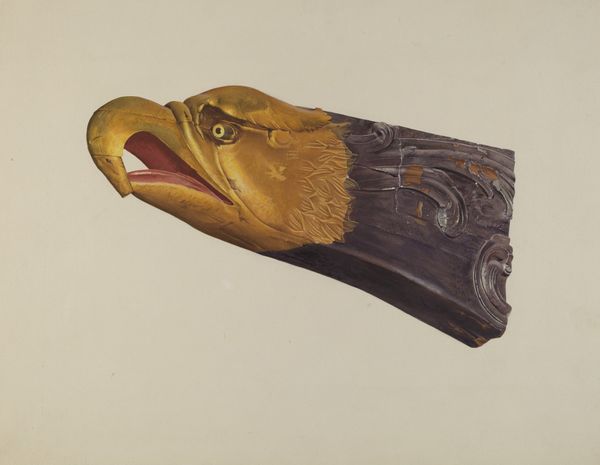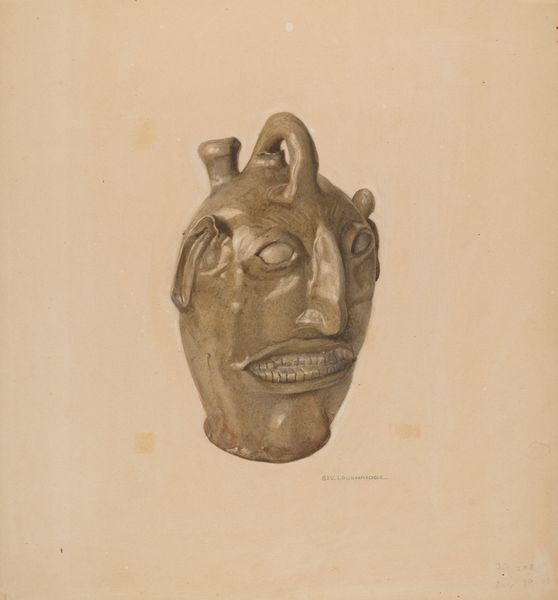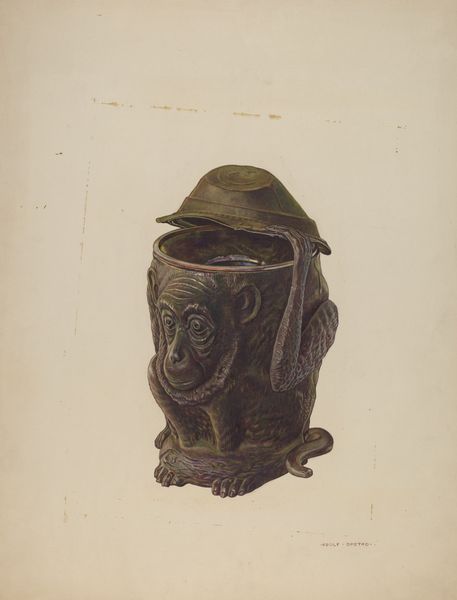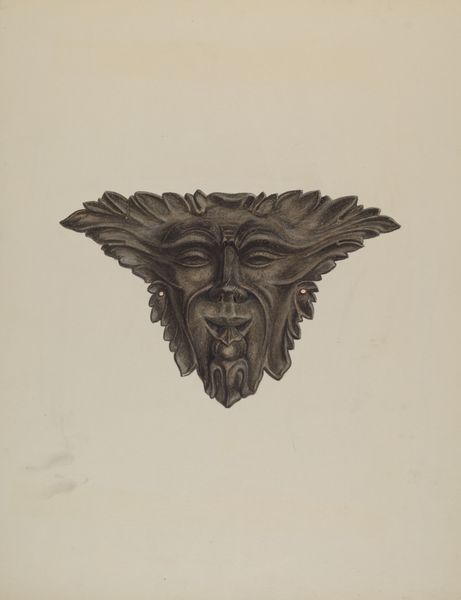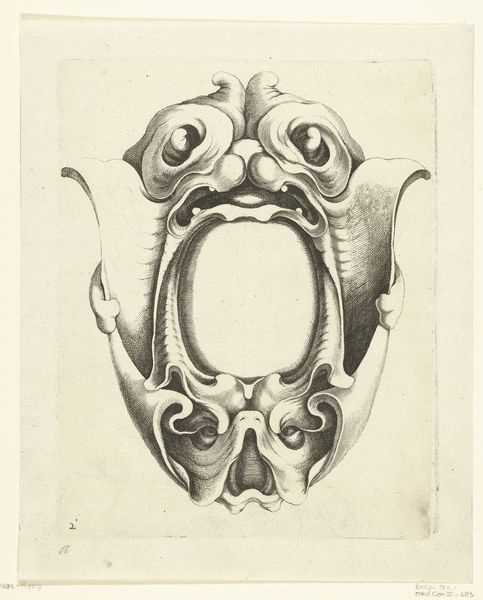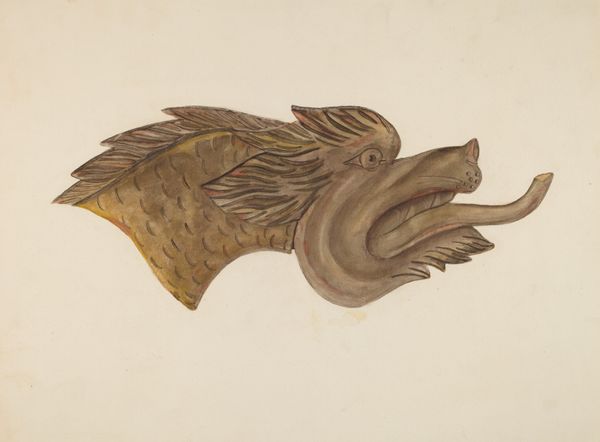
drawing, sculpture, charcoal
#
drawing
#
sculpture
#
charcoal drawing
#
figuration
#
sculpture
#
charcoal
#
academic-art
#
charcoal
Dimensions: overall: 22.2 x 30.2 cm (8 3/4 x 11 7/8 in.)
Copyright: National Gallery of Art: CC0 1.0
Curator: This is John Davis’s "Cat Head Gargoyle," created sometime between 1932 and 1945, executed in charcoal. Editor: Well, my first thought? That cat’s seen some things. The wear and tear gives it a kind of melancholy gravitas. Almost makes you wonder what historical secrets it's been privy to, perched up there, judging us all. Curator: Absolutely. Gargoyles often embody a complex duality. We usually think about gothic architecture. It is worth noting how Davis brings the academic art tradition into this figuration, pushing the boundaries of that symbolic representation by inviting themes of protection and warding off evil, whilst the depiction through drawing questions its function. How does the intent change when we're presented with a representational drawing instead of a functional stone carving? Editor: That’s such a great point! It makes you ponder the role of art itself, right? Is it a sentinel, a decorative flourish, or a mirror reflecting our fears and anxieties? Plus, Davis's choice of charcoal...it really brings out the texture. You can almost feel the stone's age. And charcoal gives the sculpture this soft, smoky aura too, like a fading memory. It does change our relationship to the subject somehow. Curator: And Davis, situated as a Black artist working during this period, brings in elements of the Africanist presence in both art and architecture. This opens up discussion about labor, and questions of visibility and racial power, even in what may seem like an ordinary gargoyle. Editor: So true! And even visually, that worn, almost eroded look it's got, hints at resilience. It’s a silent scream that embodies survival and perseverance, reminding me of the old saying, "if these walls could talk." Ha! This artwork truly resonates through its whispers. I feel that what you mention impacts how one would look at his other works, perhaps like *Standing Man* or *Kneeling Woman*. What do you think? Curator: It completely transforms the narrative, I believe. Davis has allowed for a space to reconsider conventional symbolism and consider these carvings in a way that acknowledges complex histories of marginalisation. Editor: Definitely changes how I view it. I’ll leave here considering the voices we often don’t get to hear, that speak from the shadows of our shared histories, giving a deeper understanding.
Comments
No comments
Be the first to comment and join the conversation on the ultimate creative platform.
